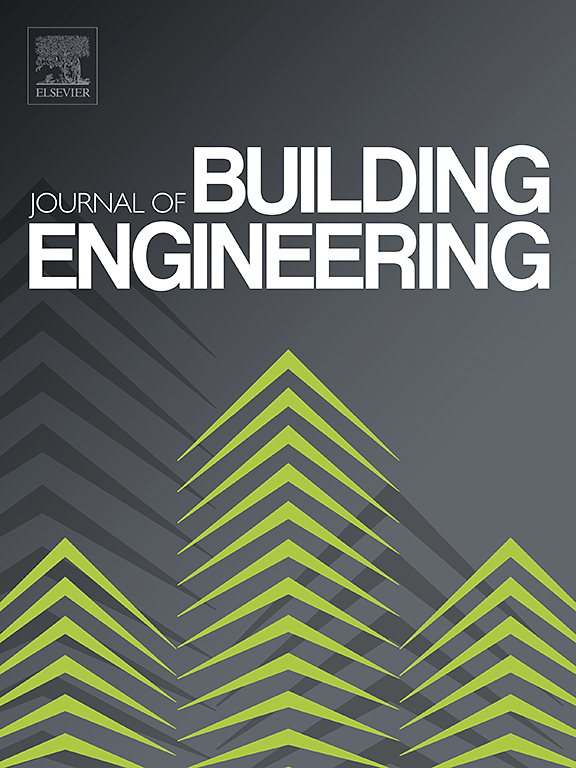应用剪切水平导波对薄壁超高性能混凝土进行无损损伤检测
IF 7.4
2区 工程技术
Q1 CONSTRUCTION & BUILDING TECHNOLOGY
引用次数: 0
摘要
虽然基于导波的技术已广泛应用于各种工程材料,但其在超高性能混凝土(UHPC),尤其是薄壁结构中的应用仍未得到充分开发。本文提出了一种水平剪切 (SH) 导波技术,用于对薄型超高性能混凝土(特别是模拟管道组件)进行无损评估。所提出的技术利用 SH 模式导波实现两个关键目的:(1) 机械性能的定量评估和 (2) 缺陷几何形状的精确估算。利用 SH 模式波的色散特性,使用 8 毫米厚的 UHPC 板样品研究了正面缺陷形状和声学特性的检测。结果证实了 SH 波在 120 至 150 kHz 频率范围内传播的非分散性,从而确保了对超高强度混凝土波速和衰减系数的精确测量。本研究还比较了用于信号处理的短时傅立叶变换 (STFT) 方法和传统的希尔伯特包络 (HE) 方法,确定 140 kHz 为有效定位 UHPC 样品缺陷和形状特征的最佳频率。这项初步研究的结果有助于为超高强度混凝土薄结构制定新的维护准则,并有可能应用于超高速轨道系统和复杂的建筑设计中。本文章由计算机程序翻译,如有差异,请以英文原文为准。
Application of shear horizontal guided waves for nondestructive damage detection in thin-walled ultra-high performance concrete
While guided wave-based techniques have been extensively developed for various engineering materials, their application to ultra-high performance concrete (UHPC), particularly in thin-walled structures, remains underexplored. This paper presents a shear horizontal (SH) guided wave technique for the nondestructive assessment of thin-shaped UHPC, specifically mimicking pipeline components. The proposed technique leverages SH mode guided waves for two key purposes: (1) the quantitative evaluation of mechanical properties and (2) the precise estimation of defect geometry. An 8 mm-thick UHPC plate sample was used to investigate the detection of frontal defect shapes and acoustic properties by utilizing the dispersive traits of SH mode waves. The results confirm the nondispersive nature of SH wave propagation at frequencies between 120 and 150 kHz, ensuring accurate measurements of wave velocity and attenuation coefficients for UHPC. This study also compares the short-time Fourier transform (STFT) method employed for signal processing with the conventional Hilbert envelope (HE) method, identifying 140 kHz as the optimal frequency for effective defect localization and shape characterization in the UHPC sample. The findings from this preliminary study can contribute to establishing new maintenance guidelines for thin UHPC structures, with potential applications in hyperloop systems and complex architectural designs.
求助全文
通过发布文献求助,成功后即可免费获取论文全文。
去求助
来源期刊

Journal of building engineering
Engineering-Civil and Structural Engineering
CiteScore
10.00
自引率
12.50%
发文量
1901
审稿时长
35 days
期刊介绍:
The Journal of Building Engineering is an interdisciplinary journal that covers all aspects of science and technology concerned with the whole life cycle of the built environment; from the design phase through to construction, operation, performance, maintenance and its deterioration.
 求助内容:
求助内容: 应助结果提醒方式:
应助结果提醒方式:


